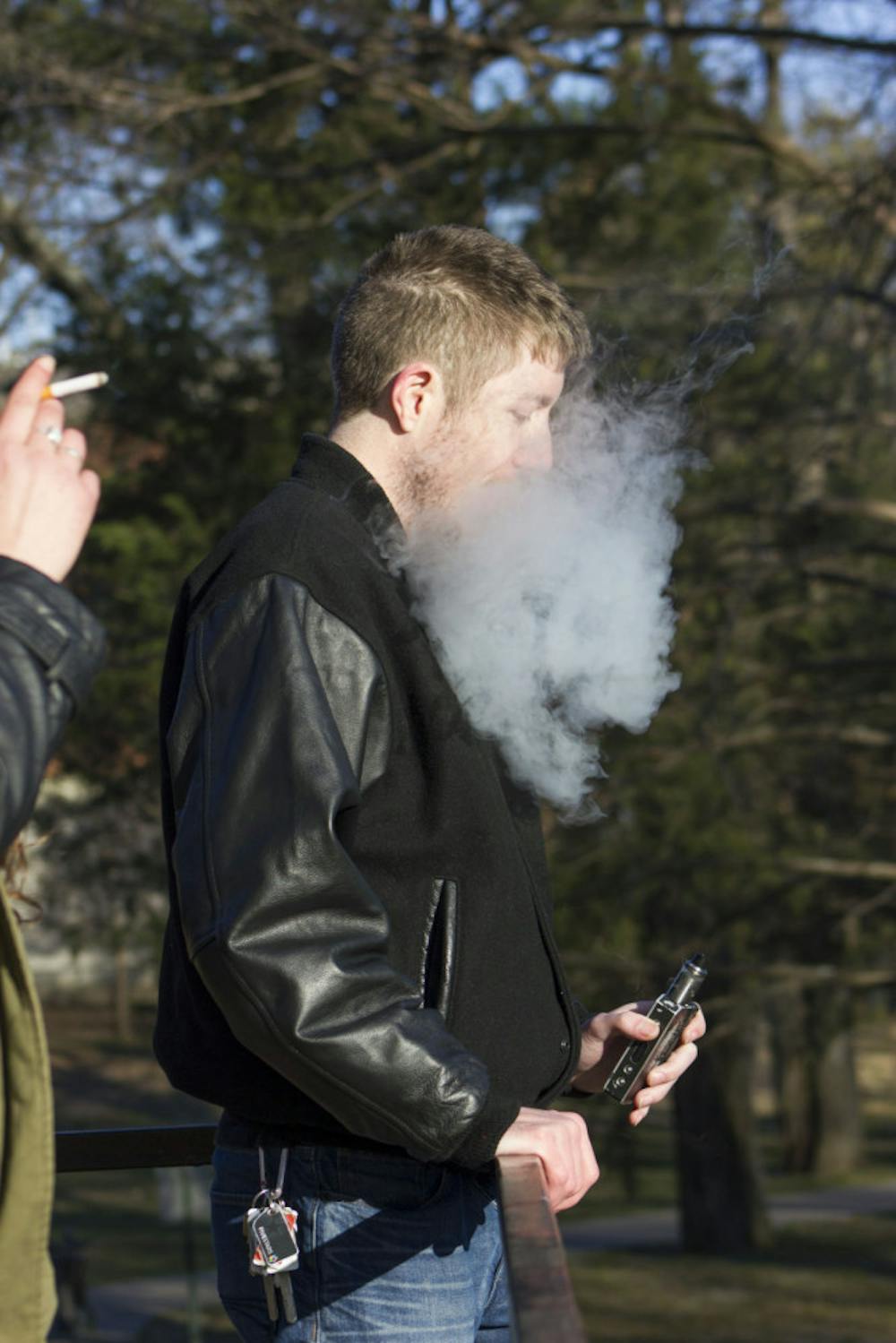University of Memphis may crack down on students smoking in parts of campus they are not supposed to. This includes e-cigarettes.
An email sent out to all students from Maria Alam, chief human resources officer at the U of M, reminded students that the U of M is a limited tobacco campus.
Part of this means that there are only four places on the main campus anyone is allowed to smoke — again, including e-cigarettes.
Electronic cigarettes are also a risk to health, said Marie McGee, Human Resources Coordinator for Memphis Healthy U. She and her staff are doing everything they can to enforce designated smoking areas.
“The e-cigarette is just like regular cigarettes, you need to smoke them in only in the areas that you are allowed to smoke them in,†McGee said. “It is too many people walking around the campus smoking, and just blowing smoke everywhere. That can cause a real health hazard to any and everyone around them.â€
McGee said that she and her staff are working towards handing out Tiger Zone passes that have the appropriate smoke areas and to put up signs around campus for these smoking areas.
“I think a lot of students don’t know where to go, so they just do it wherever they go,†McGee said. “Believe it or not, we are one of the few universities that allow smoking, others do not. We are trying to heavily enforce those policies, so that won’t happen, and we plan to send out new smoking policies sometime this week through email to students.â€
According to the American Lung Association, e-cigs contain varying levels of nicotine, as well as cancer-causing chemicals.
Other researchers at Harvard also found that the liquids inside of e-cigs containing these chemicals are associated with “popcorn lungâ€, which is a severe respiratory condition characterized by scarring of the lung’s tiny air sacs.
E-cigs are battery-operated devices that allow users to inhale an aerosol that contains nicotine or other substances.
It uses a heating element to heat a liquid from a refillable cartridge, releasing chemical-filled aerosols.
The use of e-cigs have not been regulated by the Food and Drug Administration, meaning that there have been no safety checks and reviews, nor is there any public knowledge about the ingredients used to make e-cigs.
The flavors that are used inside the e-cigs raise a health concern as well. Marketers have suggested that the flavors have the FEMA GRAS status, which is the same status used for foods.
The association found this to be misleading, stating that the FEMA GRAS status applies only substances that are guaranteed safe to eat but not to inhale.
Despite the health concerns, the use and market of e-cigs continues to increase, due to companies branding their product as a means of helping consumers quit smoking and as a ‘hip’ trend among young people.
Nichole Cheatham, 21, U of M junior, said smoking e-cigs are addictive and are a favorite pastime between her and friends.

Casey Speraw, computer science student, blows smoke from
his vaporizer near Patterson Hall on Feb. 9, 2016. In a recent
email to all students, the U of M alluded to cracking down on
smoking outside of designated areas.
“Especially the flavors, they’re really good, and I love how they smell,†Cheatham said. “Sometimes when me and my friends are kicking it, we’ll give each other new ones to try out. Like my favorite one is the raspberry, and my best friend likes mint.â€
Cheatham said she sees several other people walking around campus smoking e-cigs and chooses to ignore the risks.
“I guess I can try not to use them as much, but it would be kind of hard for me to just stop using them like that because I do enjoy them, and it’s fun for me to do,†Cheatham said.






